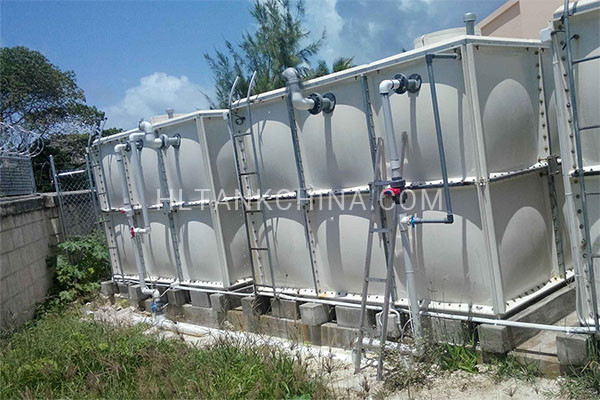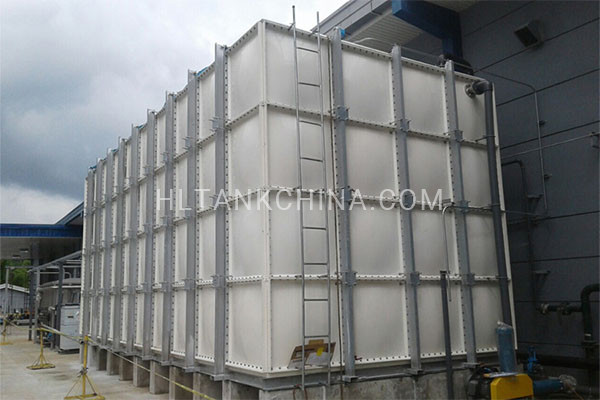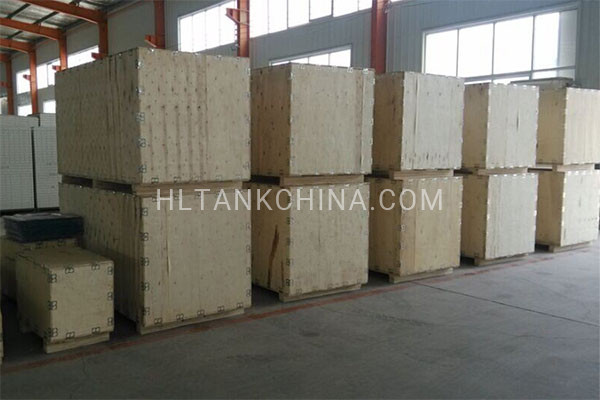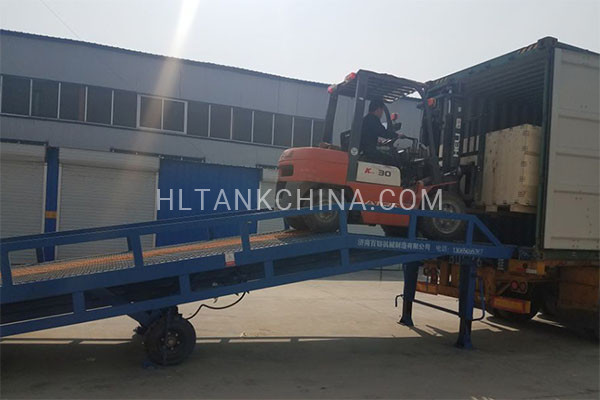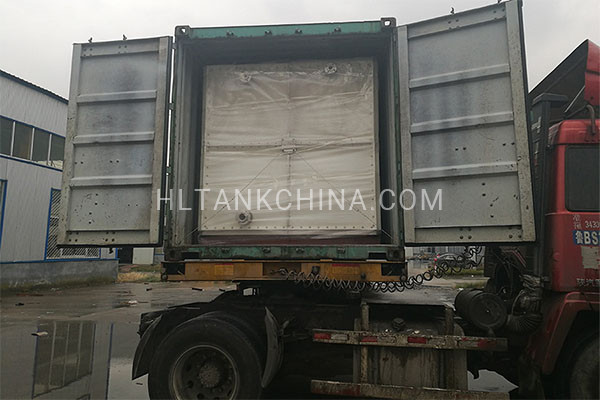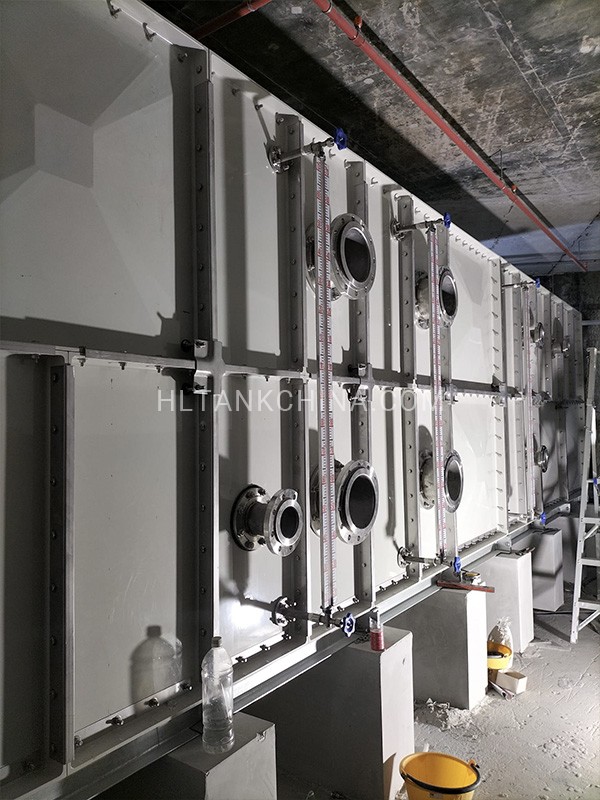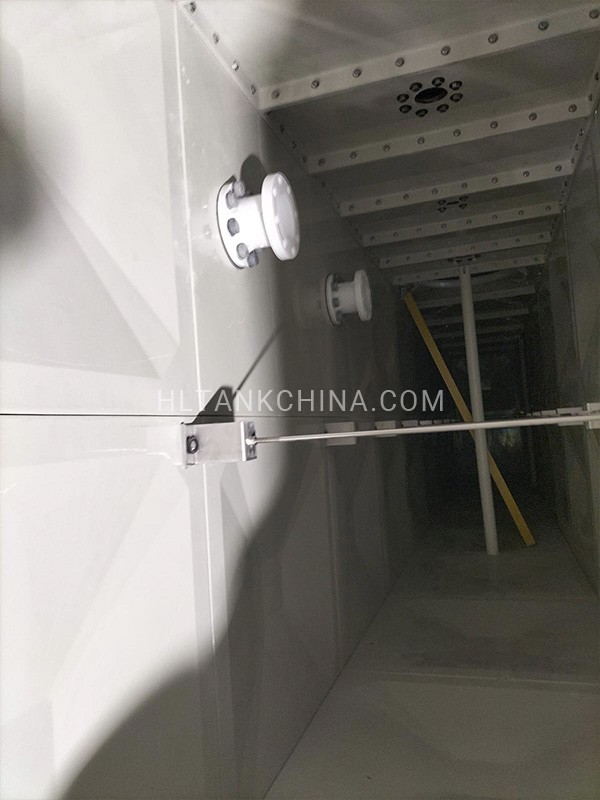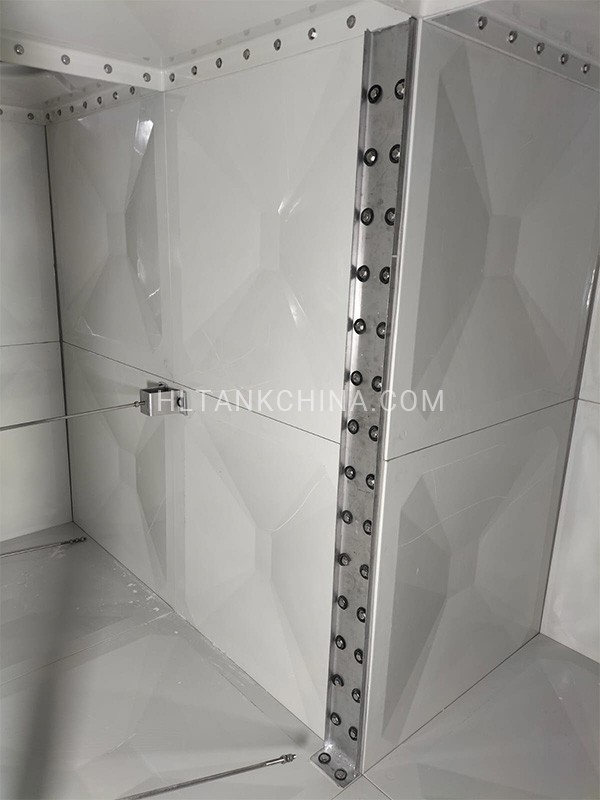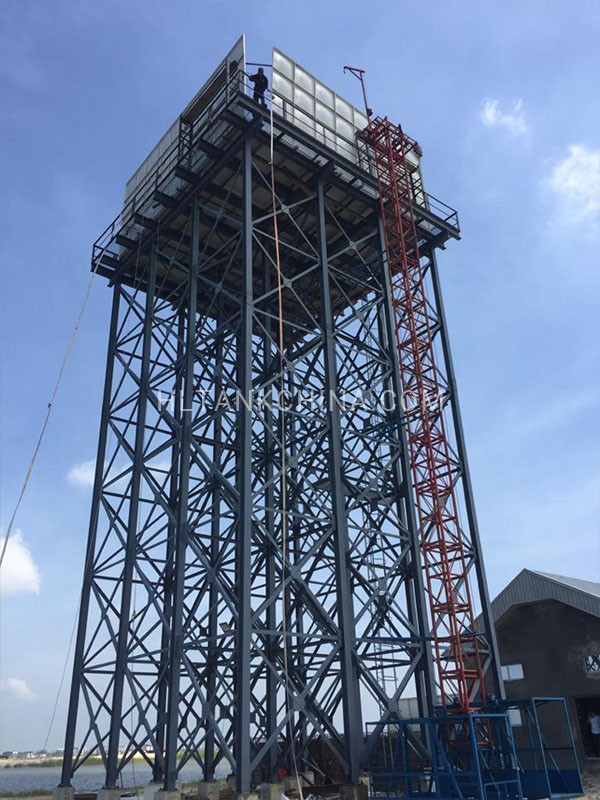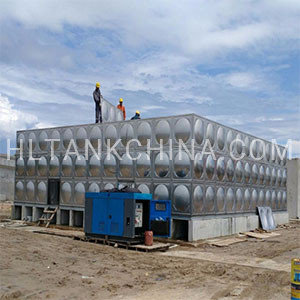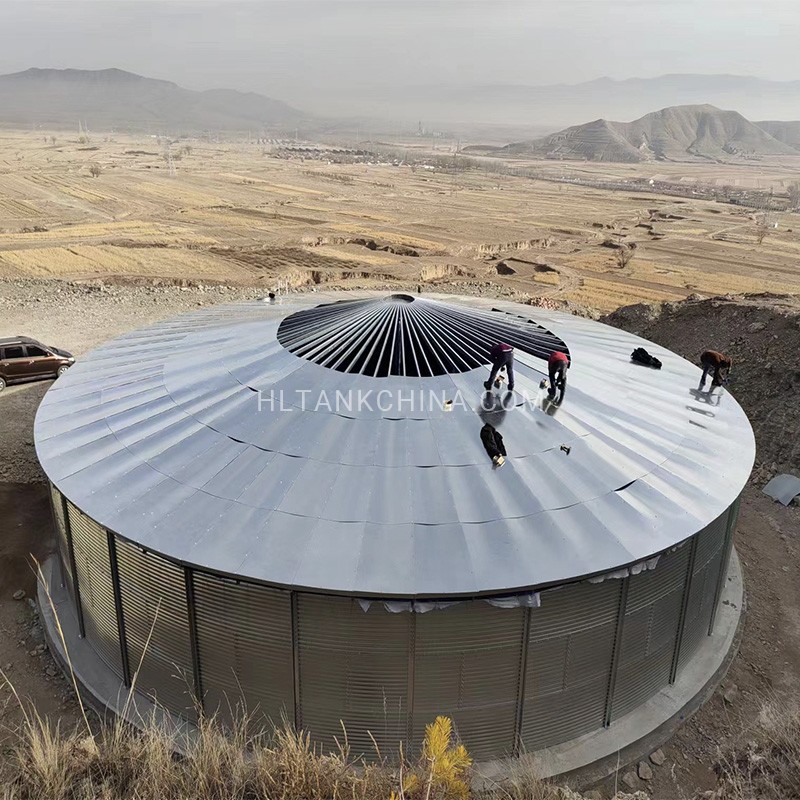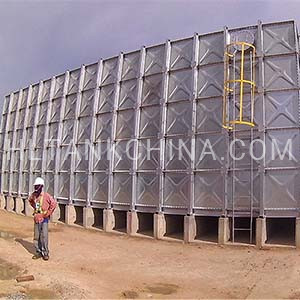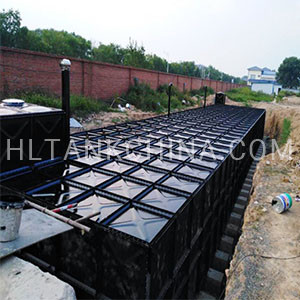
What is GRP Water Tank?
GRP water tanks is the abbreviation of Fiberglass Reinforced Plastic water tanks,are leading industry and civil standard water storage equipment on the market.There are many advantages such as lightweight,strong structure,modular and sectional assembly by standard panels design. GRP tanks provide safe environment with no risk of bacteria corrosion.
Furthermore,Due to the raw material to manufacturing water tank is self-resistant to bad weather and high temperature,meaning the water tank lifespan is long.Meanwhile,all raw materials attribution decides the water tank is pliable,application wide for any specific access or needs.
TECHNICAL DATA
PANELS
●MATERIAL
1. Food grade unsaturated polyester resin.
2. Alkali free twist glass fiber roving.
3. Thickener (MgO), initiator (curing agent), cross linking agent,etc.
●SIZE & WEIGHT
1. The size of FRP/GRP panel are produced by standard mould, having size 1*1m, 1*0.5m and 0.5*0.5m.
2. The panel thickness is depends on tank height.
3. The available highest height is 5 meters (Add external C channel or I- beam reinforcement is needed for 4m and 5m height).
●WATER TANK HEIGHT MATCHES PANEL THICKNESS.
| Height | Bottom Board | Side 1 | Side 2 | Side 3 | Side 4 | Side 5 | Top board |
|---|---|---|---|---|---|---|---|
| 1000 mm | 10 mm | 10 mm | 5 mm | ||||
| 1500 mm | 10 mm | 10 mm | 8 mm | 5 mm | |||
| 2000 mm | 12 mm | 10 mm | 8 mm | 5 mm | |||
| 2500 mm | 12 mm | 12 mm | 10 mm | 8 mm | 5 mm | ||
| 3000 mm | 14 mm | 14 mm | 12 mm | 8 mm | 5 mm | ||
| 3500 mm | 16 mm | 14 mm | 12 mm | 10 mm | 8 mm | 5 mm | |
| 4000 mm | 18 mm | 18 mm | 14 mm | 12 mm | 10 mm | 5 mm | |
| 4500 mm | 20 mm | 20 mm | 16 mm | 14 mm | 12 mm | 10 mm | 5 mm |
| 5000 mm | 20 mm | 20 mm | 16 mm | 14 mm | 12 mm | 10 mm | 5 mm |
●WEIGHT/EACH PANEL
| Item | 5 mm | 7 mm | 8 mm | 10 mm | 12 mm | 14 mm | 16 mm | 18 mm | 20 mm |
|---|---|---|---|---|---|---|---|---|---|
| 500 x 500 mm | # | 4.5 kg | 4.8 kg | 5.8 kg | 6.7 kg | 7.5 kg | 8.5 kg | 9.5 kg | # |
| 500 x 1000 mm | 7 kg | # | 9 kg | 11 kg | 13 kg | 15 kg | 17 kg | 19 kg | 21kg |
| 1000 x 1000 mm | 12 kg | 14.5 kg | 17.5 kg | 21 kg | 25 kg | 29 kg | 33 kg | 37 kg | 41 kg |
●PHYSICAL PROPERTIES
| Physical properties | Standard requirement | Result |
|---|---|---|
| Tensile strength | ≥60 Mpa | 67 MPa |
| Bending strength | ≥120 Mpa | 186 MPa |
| Bending modulus | ≥10 GPa | 12 GPa |
| Pap hardness | ≥60 HBa | 64 HBa |
| Bibulous rate | ≤0.5% | 0.11% |
| Glassfiber content | ≥25% | 30% |
ACCESSORIES
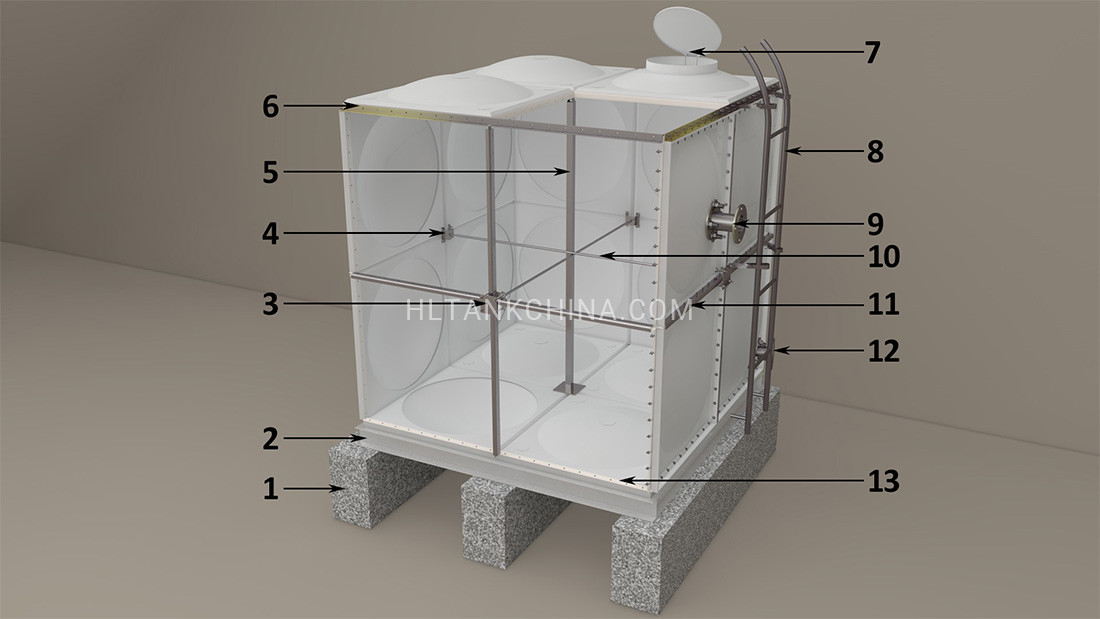
1. Concrete beam 2. C-channel base 3. Outer tie rod plate 4. Inner tie rod plate 5. Vertical support 6. Top angle bar 7. Manhole
8. External ladder 9. Inlet Flange 10. Horizontal tie rod 11. Side angle bar 12. Outlet pipe 13. Sealing rubber
●BOLTS & NUTS—— 1. Hot dipped galvanized 2. Stainless steel 304/316
●SKID BASE —— 1.Painting 2.Hot dip galvanized
●INTERNAL STRUCTURE—— 1. Hot dipped galvanized 2. Stainless steel 304/316
●FLANGES—— 1. Hot dipped galvanized 2. Stainless steel 304/316 3. PVC
●SEALING RUBBER—— 1. Food grade white color EPDM 2. Silicon
●WATER INDICATOR—— 1. Glass with brass valve 2. Float type
DESCRIPTION
1. GRP is also called FRP or SMC water tank ,widely used in firefighting,residence and somewhere lacking water,modular design and standards.
2. Fiberglass water tank is assembled by pieces of panels and shape customized according to requirement and some are partitions in the between for better use.
3. GRP modular water tank can store sea water,waste water,drinking water and many kind of water,all panels are made of food grade materials.
4. The cost is more cost effective and usually it could be used last for over 15 years with easy sectional installation( Support Installation video free)
5. GRP sectional water tank has developed more than 20 years and have a mature design,manufacturing technology and customization.
FEATURES
1. All panels are made of food grade materials and comply with national standards.
2. Inner accessories and outer accessories support both drinking water and non-drinking water storing.
3. Excellent UV-resistant and weathering-resistant characteristics,corrosion-resistant and rust resistant.
4. Tank panels are made of three types including 1000 x 1000 mm,1000 x 500 mm,500 x 500 mm,better satisfy the different size of water tank requirement.
5. C-channel base is available for both bolt connection and welding connection,which surface treated with either painting or hot dip galvanized.
APPLICATION
What are water tanks widely used for?
2. Agricultural Irrigation Tanks
3. Septic Tanks and Sewage Tanks
4. Distillation and Process Tanks
5. Fire Reserve Storage Tanks,Swimming Pool Balance Tanks
6. Hot Water Storage Tanks and Chemical Substance Storage Tanks
7. Rain Water Harvesting Tanks,Well Water Tanks,Sea Water Tanks
8. Reverse-Osmosis Water Tanks(water with high or low conductivity)
9. Industrial Process Tanks,Chiller Water Tanks,Cooling Tower Water Tanks
DESIGN
PACKING
With over 20 years factory manufacturing experience and five years of export experience,we designed and evolved packing a lot for delivery safety and most cost effective.
Connect to your next successful water tank project !
INSTALLATION
Technical support
GRP water tank installation video
ADVANTAGES
COST-EFFECTIVE
FRP/GRP is a kind of high-technological reinforced plastic. It has low cost and high performance, is a perfect substitute of metal tank.
RELIABLE QUALITY
Our FRP/GRP’s raw material are all international famous brand. The life-span can be over 1/4 century.
DIMENSION FLEXIBILITY
The size of panel can be 1*1 m,1*0.5 m and 0.5*0.5 m, which can assembled kinds of volume from 0.125m³ to 5000m³. That’s extremely convenient to select for you.
CONVENIENT INSTALLATION
Factory precast panel is easy to assemble and disassemble, the construction drawing, installation video, and a series of complete installation plan will be provided.
POTABILITY
FRP/GRP material has passed local Water Quality Inspection testing. Test result shows our FRP/GRP are suitable for potable water reserve. Roof panel adopt upward bulge to prevent rainwater remain on the top. Further prevent mosquito breeding and dirty water permeate inside the tank.
DOWNLOAD
PRODUCTION SCOPE
As over 20 years of water tank manufacturer,we have established 4 production lines separately for GRP modular water tank,HDG water tank,Stainless steel water tank,GSC underground water tank,which include 58 skilled engineers, 8 sets of molding pressure machines.
Except above water tank series,we could process and customize other SMC products such as electric pole protection cases,farm planting SMC series.
National Standard (12S101) GRP Sectional Water Tank Project Cases
Huili has the capability to design and manufacture GRP (Glassfiber Reinforced Plastic) sectional water tanks in full compliance with National Standard specifications (12S101). These tanks are ideal for large-capacity and high-rise applications where durability, corrosion resistance, and structural integrity are essential.
As shown in the projects below, Huili has successfully delivered large-scale GRP water tanks with capacities over 1500 cubic meters and a height of 5 meters, in accordance with 12S101 standards:
If you are interested in National Standard GRP sectional water tank,just drop me email [email protected] or text Whatsapp:+8618505343912
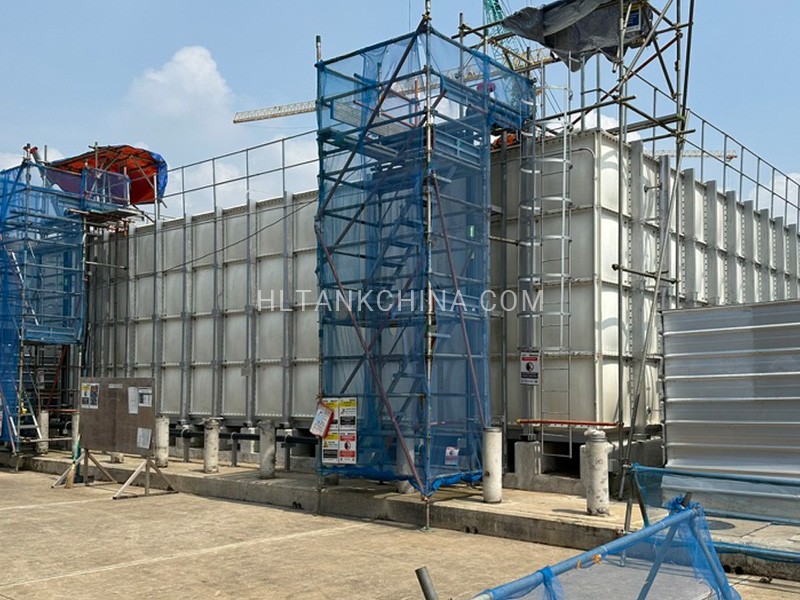
Indonesia GRP water tank 23×14(7+7)x4m ( with partition)
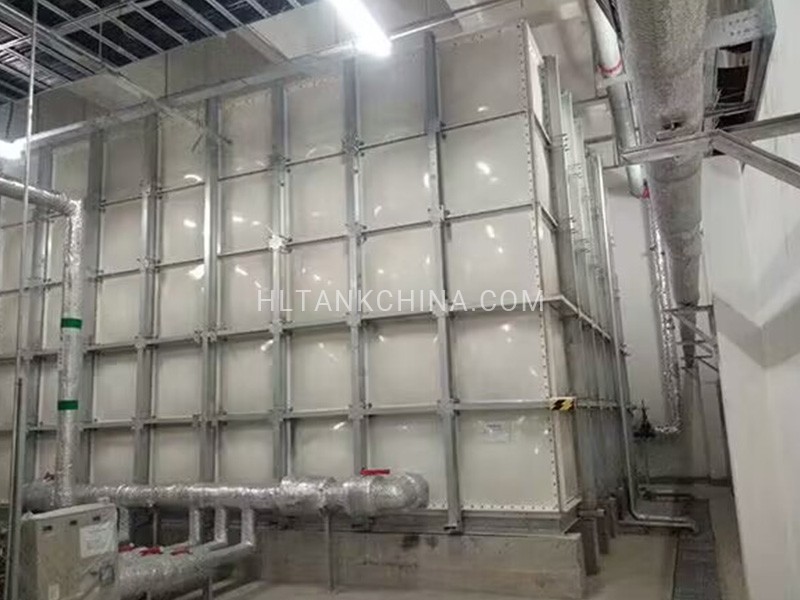
Philippine GRP Sectional Water Tank 15x8x5m
Korea GRP Modular Water Tank Showing (Optional)
We make two types of GRP water tanks,one is above traditional GRP water tank(National Standard),One is below Korea GRP water tank.
Below project is our Singapore odd shape (with 12 turnings) Korea Type GRP water tank.
If you are interested in Korea-type GRP water tank also,just drop me email [email protected] or text Whatsapp:+8618505343912
Highlighting Huili’s Strength in Large-Scale and Tall Korea GRP Panel Sectional Water Tank Projects
Huili has extensive experience not only in designing and installing complex multi-turning water tanks, as demonstrated by the Singapore projects above, but also in executing large-scale and tall tank installations. The two projects below showcase Korea GRP panel sectional water tanks, each with a capacity exceeding 1000 cubic meters and a height of 5 meters.
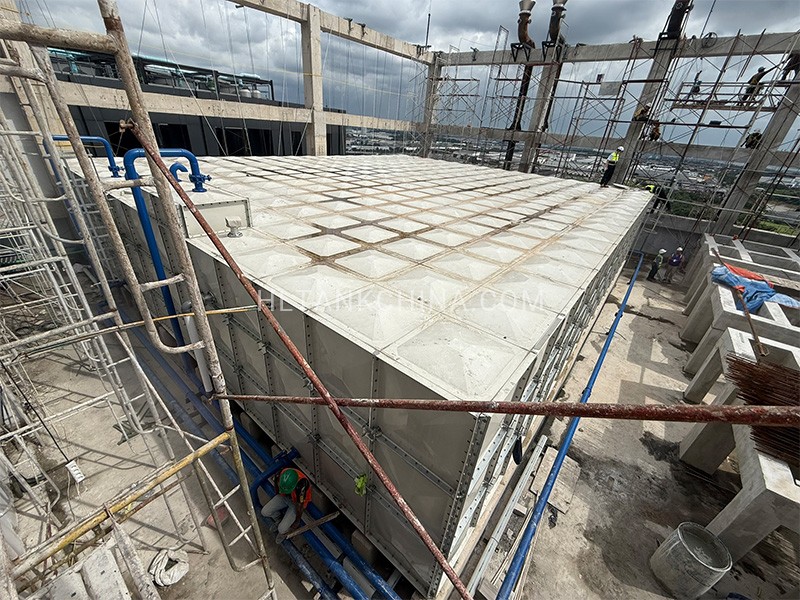
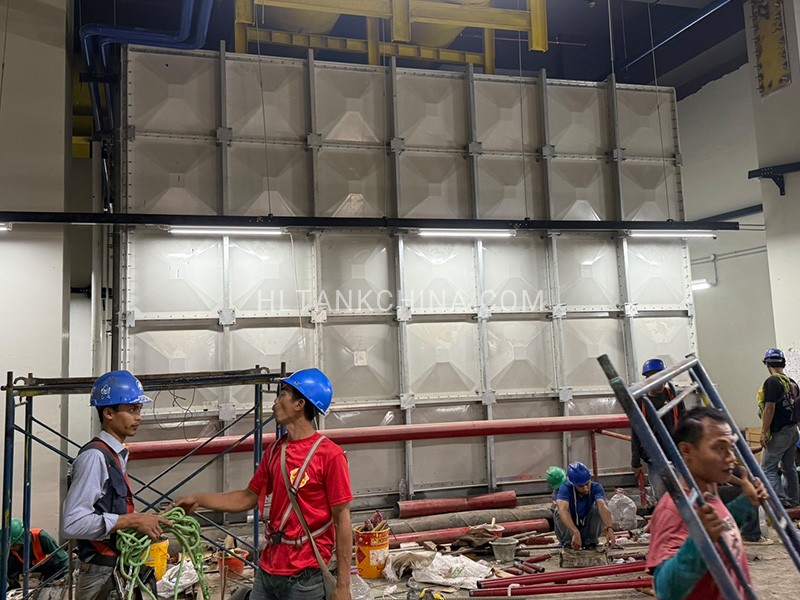
Elevated (Overhead) GRP Panel Sectional Water Tank vs Ground GRP Water Tank
According to the installation position, GRP panel water tanks (called FRP water tank or SMC water tank) can be categorized into elevated (or overhead) water tanks and ground (or on-ground) water tanks. Here’s a detailed description of each type:
Elevated GRP Water Tank (Overhead GRP Water Tank)
Installation Position: Installed at a height, usually on top of a tower, steel support structure, or building rooftop.
Purpose:
Provides gravity-fed water supply, eliminating the need for continuous pumping.
Ensures stable water pressure for residential, commercial, and industrial applications.
Commonly used in municipal water supply systems, high-rise buildings, agricultural irrigation, and firefighting systems.
Structural Features:
Requires strong supporting structures (concrete or steel towers) to bear the weight of the filled tank.
The tank is often designed with corrosion-resistant coatings to withstand outdoor exposure.
Can be constructed in modular panel form for easy transportation and assembly.
Advantages:
Energy-efficient: Uses gravity instead of relying on pumps.
Reliable water supply even during power outages.
Disadvantages:
Higher installation cost due to the need for a support structure.
Requires structural reinforcement for earthquake and wind resistance.
Ground GRP Water Tank (On-Ground Water Tank)
Installation Position: Installed directly on the ground or on a concrete base/foundation.
Purpose:
Used for water storage in factories, fire protection, agriculture, and residential areas.
Serves as a backup water supply in case of shortages or emergencies.
Structural Features:
Typically modular and assembled using galvanized steel panels.
Often equipped with inlet, outlet, overflow, and drainage pipes for efficient water management.
Can be customized in various sizes and shapes to fit available space.
Advantages:
Easier installation with lower structural requirements.
Scalable: Can be expanded by adding more panels.
Disadvantages:
Needs a pump to distribute water at higher pressure.
Takes up more ground space, which may not be ideal in urban areas.
Comparison Summary
| Feature | Elevated GRP Water Tank | Ground GRP Water Tank |
|---|---|---|
| Installation | Installed on steel towers or concrete supports | Placed on concrete base or embedded into the ground |
| Water Supply | Gravity-fed system, reduces need for pumps | Requires pumps for water distribution |
| Maintenance | More difficult due to height, needs scaffolding | Easy access for cleaning and inspections |
| Initial Cost | Higher, due to support structure | Lower, no elevation structure required |
| Operation Cost | Lower in long term (uses gravity) | Higher due to continuous pump operation |
| Typical Applications | Rural water supply, agricultural irrigation, backup use | Urban water systems, residential buildings, factories |
Related Water Tank Products
Stay In Touch With Us

